5D Bend Pipe
The radius of a 5D pipe bend is actually what is 5 times the nominal diameter.
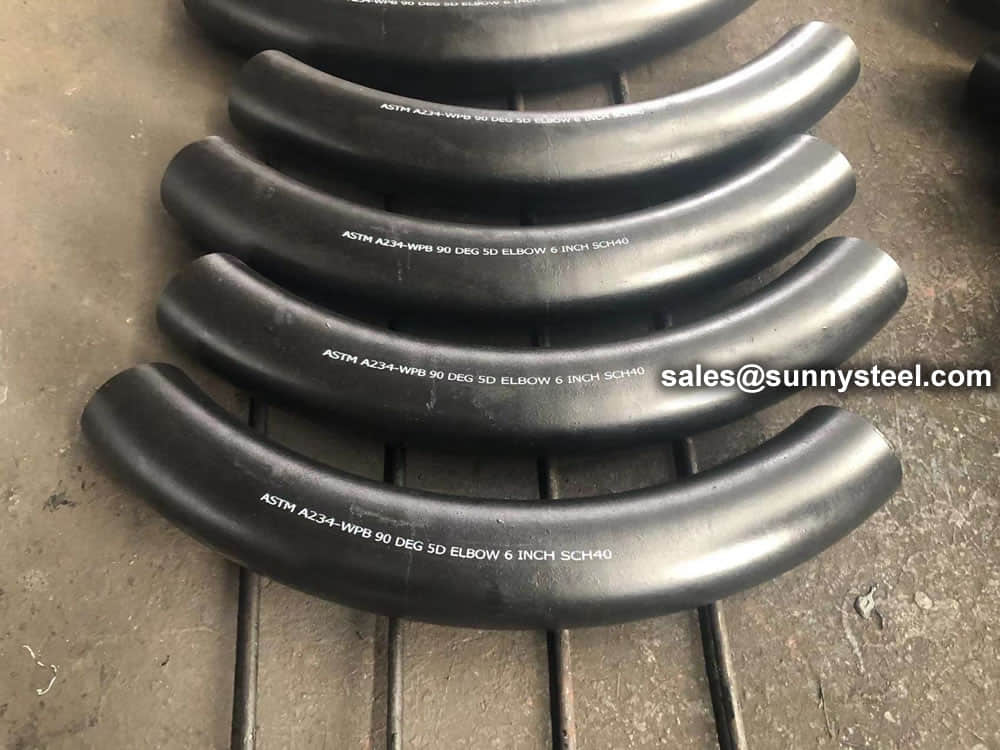
A 5D bend pipe features a bend radius five times the pipe's diameter, ensuring smooth directional changes in piping systems with minimal flow resistance.
The radius of a 5D pipe bend is actually what is 5 times the nominal diameter. So if you had a 10″ diameter pipe, the radius of the centerline of the bend would be 50 inches. Larger numbers have smoother curves. Smoother curves are often used for applications with higher pressure, abrasion or corrosion.
A 5D bend pipe is a type of pipe bend where the bend radius is equal to 5 times the outside diameter of the pipe. In other words, the curvature of the bend is relatively large and gradual, providing a smooth change in direction for the pipe.
The following table provides the dimensions of 5D elbows according to ASME B16.9, calculated by scaling the standard 3D elbow dimensions. These long-radius elbows are commonly used in piping systems requiring smoother flow with minimal pressure loss.
| Nominal Pipe Size (NPS) | Outside Diameter at Bevel (mm) | Center-to-End 90° Elbow (A) mm |
Center-to-End 45° Elbow (B) mm |
|---|---|---|---|
| ½ | 21.3 | 76 | 31 |
| ¾ | 26.7 | 95 | 40 |
| 1 | 33.4 | 127 | 52 |
| 1¼ | 42.2 | 159 | 65 |
| 1½ | 48.3 | 190 | 78 |
| 2 | 60.3 | 254 | 105 |
| 2½ | 73.0 | 317 | 132 |
| 3 | 88.9 | 381 | 158 |
| 3½ | 101.6 | 444 | 185 |
| 4 | 114.3 | 508 | 211 |
| 5 | 141.3 | 635 | 264 |
| 6 | 168.3 | 762 | 316 |
| 8 | 219.1 | 1016 | 421 |
| 10 | 273.0 | 1270 | 527 |
| 12 | 323.8 | 1524 | 632 |
| 14 | 355.6 | 1778 | 737 |
| 16 | 406.4 | 2032 | 843 |
| 18 | 457.0 | 2286 | 948 |
| 20 | 508.0 | 2540 | 1053 |
| 22 | 559.0 | 2794 | 1158 |
| 24 | 610.0 | 3048 | 1263 |
These 5D elbows are designed for applications that require low friction and smoother directional changes in the flow. They are widely used in industries such as oil and gas, chemical processing, power generation, and more.
The term "5D" stands for "five times the diameter," indicating that the radius of the bend is measured as five times the outer diameter of the pipe. This type of bend is commonly used in various industries and applications where the flow of fluids or gases needs to be redirected without causing significant disruptions or pressure drops.
One of the main advantages of a 5D bend pipe is its ability to maintain the structural integrity of the pipe. The larger bend radius ensures that the pipe's wall thickness remains relatively consistent throughout the bend, reducing the risk of thinning or weakening of the pipe at the curve. This is particularly important in critical applications where pipe strength and reliability are essential.
5D bend pipes are known for their versatility and adaptability. They can be made from various materials, including carbon steel, stainless steel, alloy steel, and other metals, making them suitable for withstanding different operating conditions, including high temperatures, corrosive environments, and high-pressure applications.
In industries such as oil and gas, petrochemical, power generation, and construction, 5D bend pipes are frequently used to accommodate changes in pipeline direction, bypass obstacles, and optimize space constraints. Their smooth curvature and gradual transition help ensure efficient flow while minimizing pressure drop and flow resistance.
It is worth noting that achieving a precise 5D bend in a pipe requires specialized equipment and expertise. Professional manufacturers and suppliers utilize advanced bending techniques and machinery to ensure accurate measurements and bend angles.
A 5D bend pipe offers an effective solution for redirecting flow in pipelines while preserving structural strength and efficiency. Its unique design, with the bend radius being five times the pipe's outer diameter, provides a gentle curve that reduces pressure losses and turbulence during fluid or gas transportation. As a versatile and reliable option, 5D bend pipes play a vital role in various industries, providing efficient and safe fluid flow solutions.
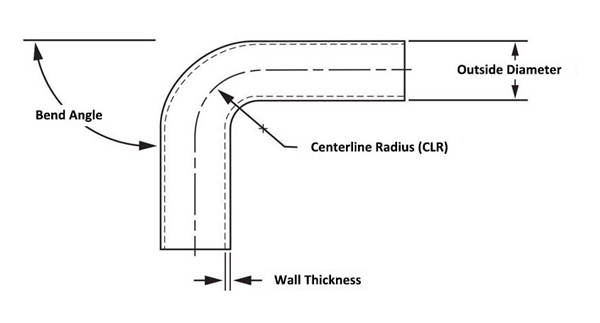
A 5D bend in a pipeline refers to a type of pipe bend where the radius of the bend is equal to five times the diameter of the pipe. This means that the curvature of the bend is much gentler than that of a 3D or 4D bend, resulting in less stress on the pipe. 5D bends are commonly used in piping systems where the flow of fluids or gases is critical, and where the pipe may need to be dismantled for inspection or maintenance. The dimensions and types of 5D bends can vary depending on the manufacturer and the specific requirements of the project.
A 3D bend is a bend in which the radius of the curve is equal to 3 times the diameter of the pipe. It is a smoother bend than a 1.5D bend, which looks almost like a regular 90-degree right angle, but it is a sharper bend than a 5D bend, which looks like a smooth arc between two perpendicular pieces.
It is the radius of bend of the elbow with reference to a point,the point is determined by the intersection of two lines from the elbows socket end (which makes the shape of one quater of a circle). The bend ie; 1.5d,3d,5d,12d is determined from that point of intersection as a multiple of elbows diameter.
A 5D bend is a pipe bend that has a radius equal to 5 times the diameter of the pipe. The dimensions of a 5D bend depend on the diameter of the pipe and the angle of the bend. Generally, the larger the diameter of the pipe, the larger the radius of the bend will be.
The formula for calculating the length of a 5D bend is L = 5 x D x θ, where L is the length of the bend, D is the diameter of the pipe, and θ is the angle of the bend in radians.
For example, if you have a 6-inch pipe and you want to bend it at a 90-degree angle, the length of the 5D bend would be:
L = 5 x 6 x (90/180) = 15 inches
This means that the length of the 5D bend for a 6-inch pipe with a 90-degree bend would be 15 inches.
It's important to note that the dimensions of a 5D bend can vary depending on the manufacturer and the specific requirements of the project. It's always best to consult with the manufacturer or a professional engineer to ensure that you have the correct dimensions for your specific application.
5D bends allow for a bend radius that is equal to five times the amount of the pipe's diameter. This is one of the greatest bends there are and goes beyond a 3D or 4D bend. It's not always required, but when it is, you have to find a company that is capable of delivering.
The size of a 5D bend is determined by the outer diameter of the pipe it is intended to be used with. The "5D" in the term "5D bend" represents the bending radius, which is five times the outer diameter of the pipe. Therefore, the size of a 5D bend will vary depending on the specific outer diameter of the pipe it is being used with. For example, if the outer diameter of the pipe is 10 inches, then a 5D bend for that pipe would have a bending radius of 50 inches. The size of a 5D bend is thus directly related to the size of the pipe it is designed to accommodate.
The main difference between a 5D bend and an elbow lies in their curvature and bending radius. A 5D bend refers to a pipe bend with a bending radius that is five times the pipe's outer diameter. This type of bend is used to change the direction of the pipeline while maintaining a gradual curve, reducing fluid flow resistance and minimizing stress on the pipe.
The RADIUS of a 5D pipe bend is actually what is 5 times the nominal diameter. So if you had a 10″ diameter pipe, the radius of the centerline of the bend would be 50 inches.
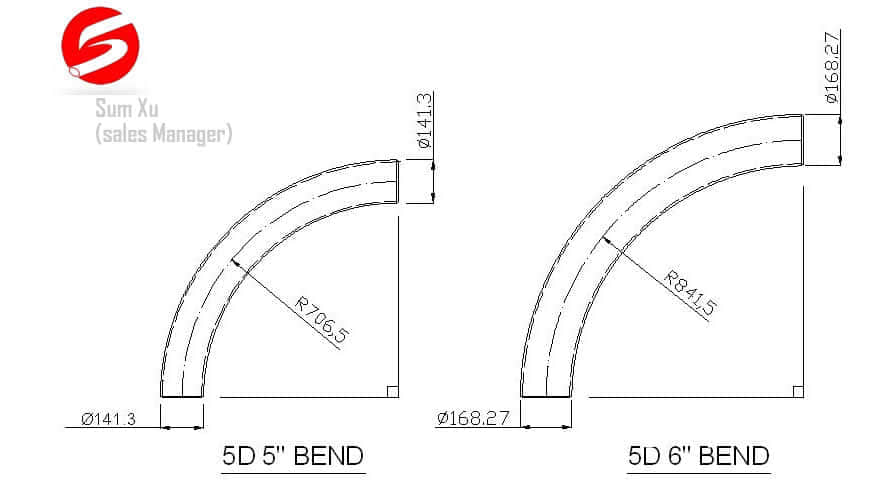
In the context of a bend pipe, "5D" refers to the bend radius, which is a critical measurement defining the curvature of the pipe bend. Specifically, "5D" stands for "five times the diameter," indicating that the bend radius is equal to five times the outside diameter of the pipe.
When a pipe is bent, the radius determines how gradually the pipe changes direction. A smaller bend radius results in a tighter curve, while a larger bend radius creates a more gentle and gradual bend. In the case of a 5D bend pipe, the radius is five times the diameter of the pipe, making it a relatively large and gradual bend.
For example, if the outside diameter of the pipe is "D" units, the bend radius in a 5D bend pipe would be "5D" units. This type of bend is commonly used in various industries and applications where the flow of fluids or gases needs to be redirected without causing significant disruptions or pressure drops.
The use of a 5D bend pipe is beneficial in maintaining the structural integrity of the pipe during the bending process. The larger bend radius ensures that the pipe's wall thickness remains relatively consistent throughout the bend, reducing the risk of thinning or weakening of the pipe at the curve. This is particularly important in critical applications where pipe strength and reliability are essential.
5D bend pipes are known for their versatility and adaptability. They can be made from various materials, including carbon steel, stainless steel, alloy steel, and other metals, making them suitable for withstanding different operating conditions, including high temperatures, corrosive environments, and high-pressure applications.
In industries such as oil and gas, petrochemical, power generation, and construction, 5D bend pipes are frequently used to accommodate changes in pipeline direction, bypass obstacles, and optimize space constraints. Their smooth curvature and gradual transition help ensure efficient flow while minimizing pressure drop and flow resistance.
The 5D bend in pipe bending is an accomplishment in pipe manufacturing, and not all pipe companies can provide it.
The only alternative to finding a professional expert in 5D bends would be to attempt training your current employees to prepare the 5D bends for your business in-house. The cost outlay for this undertaking would be prohibitive, however, plus the advantages of having a self-trained 5D bender–versus hiring a professional company with experts who have been creating 5D bends for years–are practically non-existent. Hiring a professional to create the 5D bends piping for your business contracts is a win-win solution. The mere accident potential in having a newbie bending 5Ds is an insurance company’s statistical nightmare. It’s important to find a balance between finding a company that can provide you with what you want, at a price that you can afford. Contacting a company to find out what they are going to charge for 5d bending is critical. When you look at the bending, be specific as to anything else you may need from this company as well, including how much rolled pipe. The more you buy, the more affordable it can be.
The 5D bend in pipe bending is an accomplishment in pipe manufacturing, and not all pipe companies can provide it. The only alternative to finding a professional expert in 5D bends would be to attempt training your current employees to prepare the 5D bends for your business in-house. The cost outlay for this undertaking would be prohibitive, however, plus the advantages of having a self-trained 5D bender–versus hiring a professional company with experts who have been creating 5D bends for years–are practically non-existent. Hiring a professional to create the 5D bends piping for your business contracts is a win-win solution. The mere accident potential in having a newbie bending 5Ds is an insurance company’s statistical nightmare.
It’s important to find a balance between finding a company that can provide you with what you want, at a price that you can afford. Contacting a company to find out what they are going to charge for 5d bending is critical. When you look at the bending, be specific as to anything else you may need from this company as well, including how much rolled pipe. The more you buy, the more affordable it can be.

Diagram of ASME B16.49 induction bend, 90° 3D Bend with Tangent lengths.
Larger radius bends offer several advantages for fluid flow in pipes. They provide smoother flow for various mediums such as water, slurry, oils, solids, and more. This reduced resistance results in improved flow efficiency compared to 1D or 1.5D bends. Additionally, longer bend radii help minimize turbulence, especially when compared to standard fittings.
When planning your piping project, it's essential to assess whether traditional 1D or 1.5D bends can effectively meet your requirements. If there are any doubts, it's advisable to consider using 3D or 5D bends to optimize your system's performance.
The larger produced radius bends allow whatever is going to be flowing through piping, whether it’s natural gas or water, to flow smoother with much less resistance, making it ideal for transporting high viscous fluids. The 5D bends also allow the pipe to reduce turbulence in comparison to other standard pipe bend dimensions. For this reason, 5D bends have long been the top choice for use in oil refineries and on oil fields, and depending on your job, they might be the bend dimension for you.
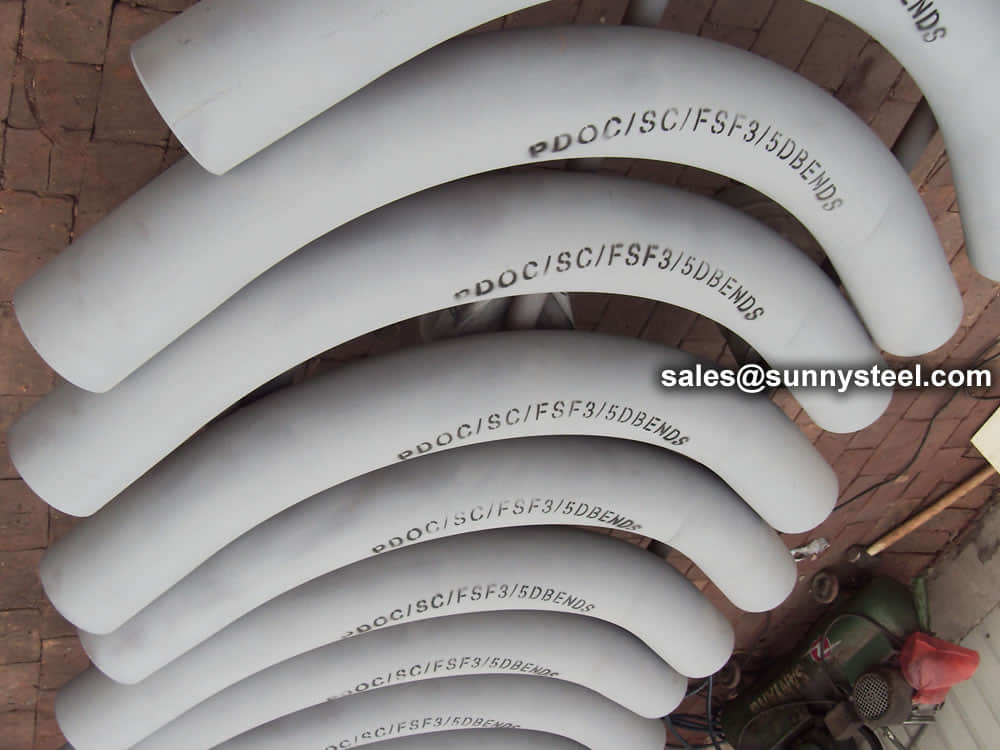
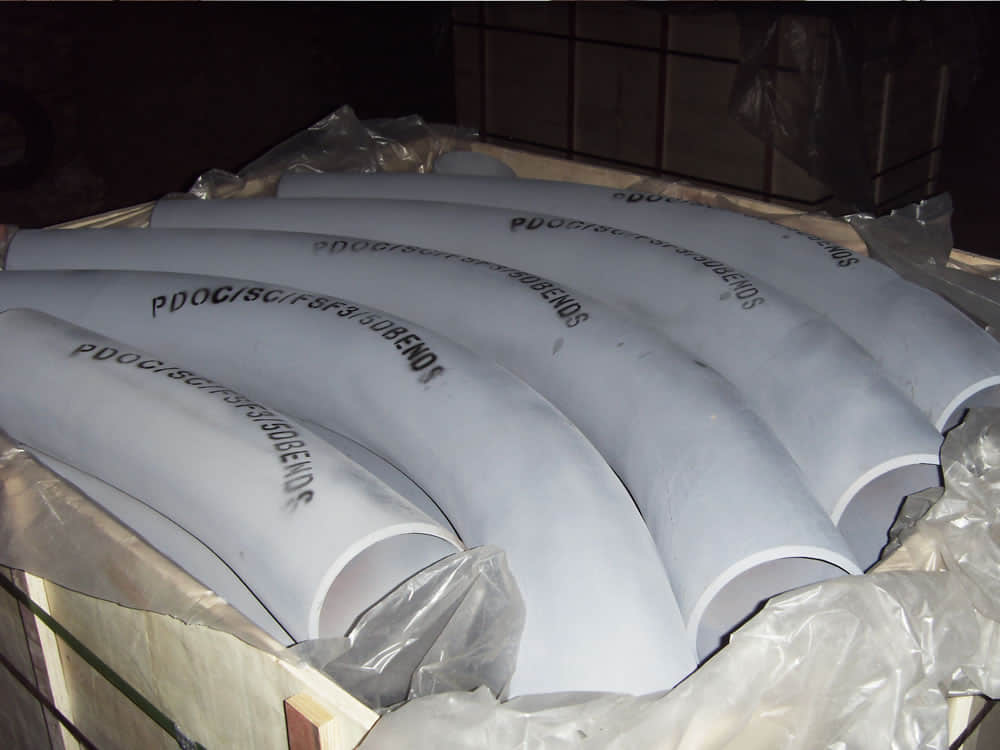
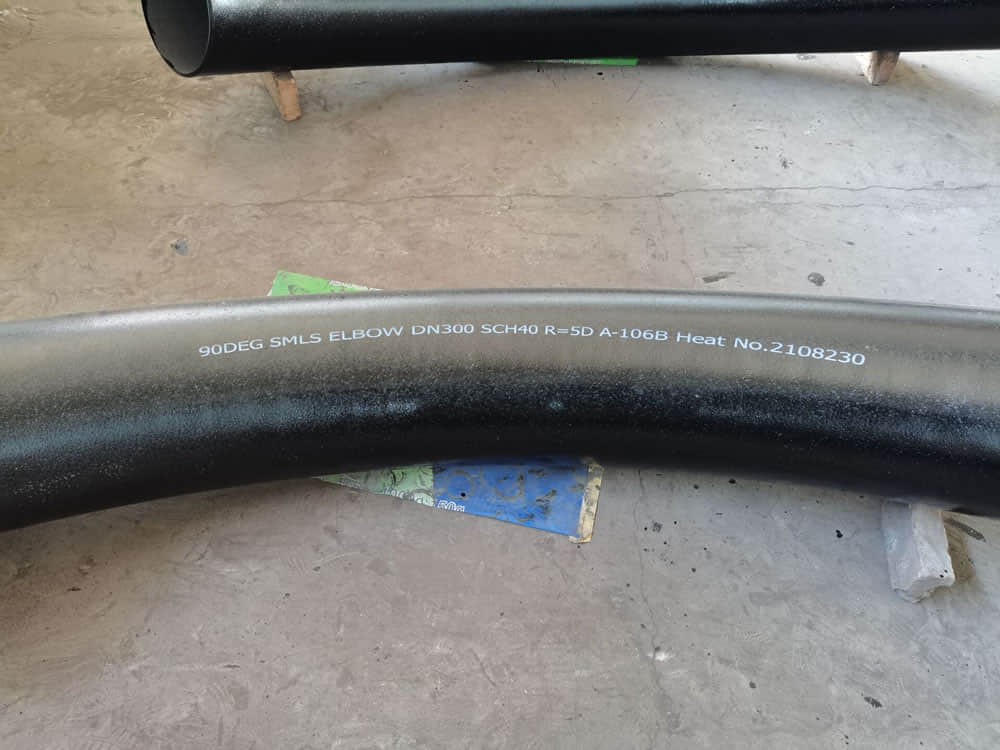
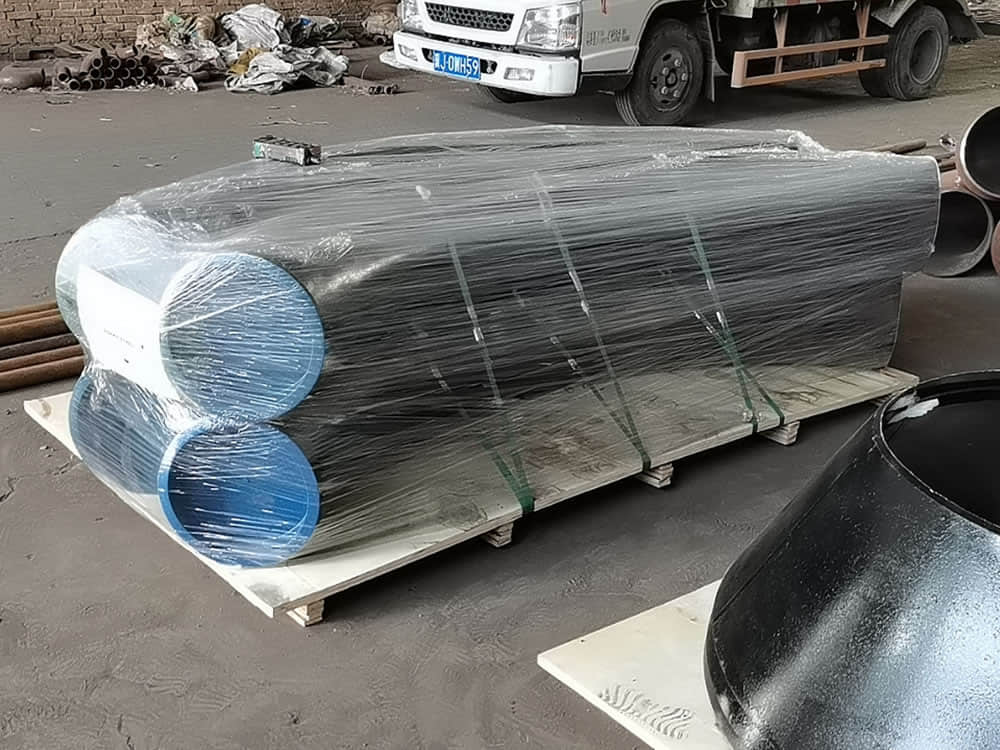
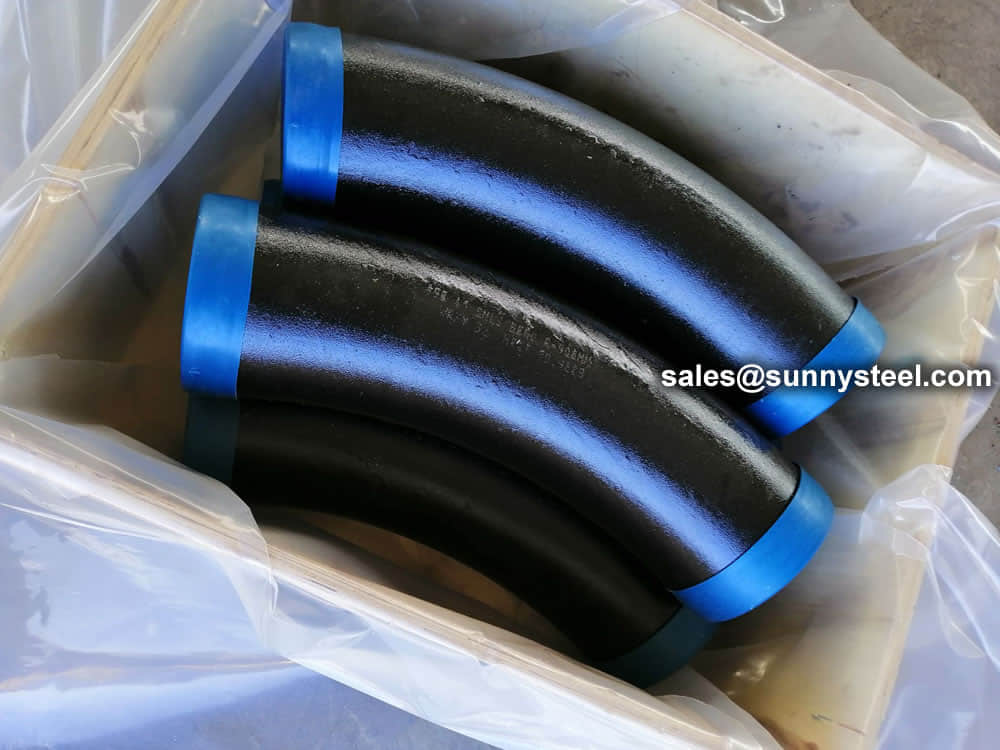
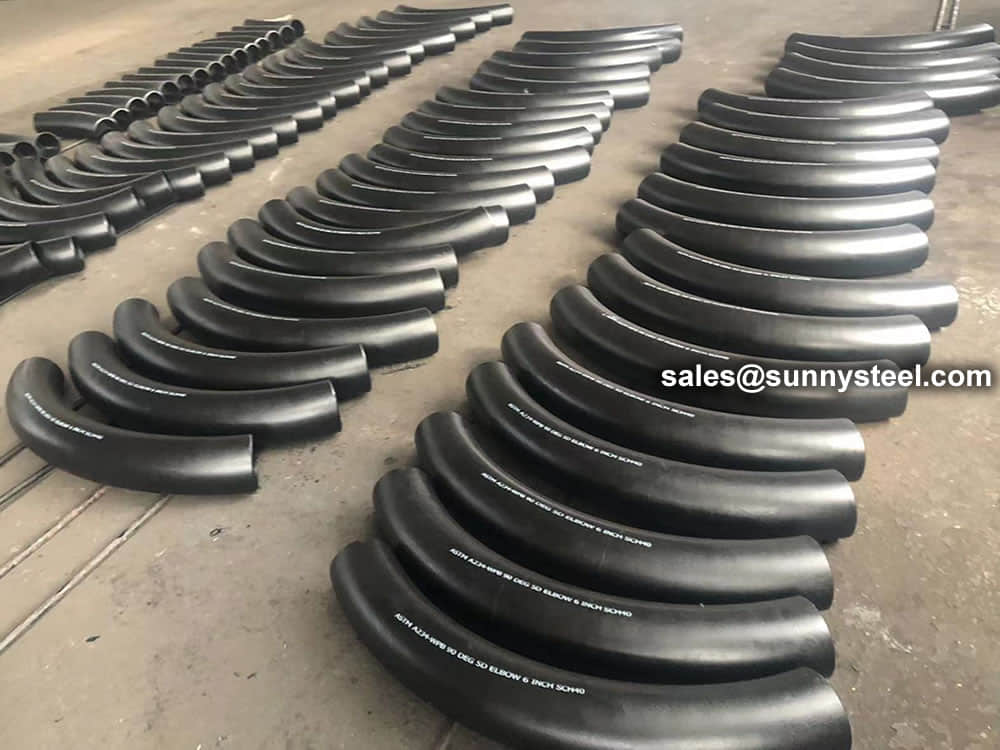
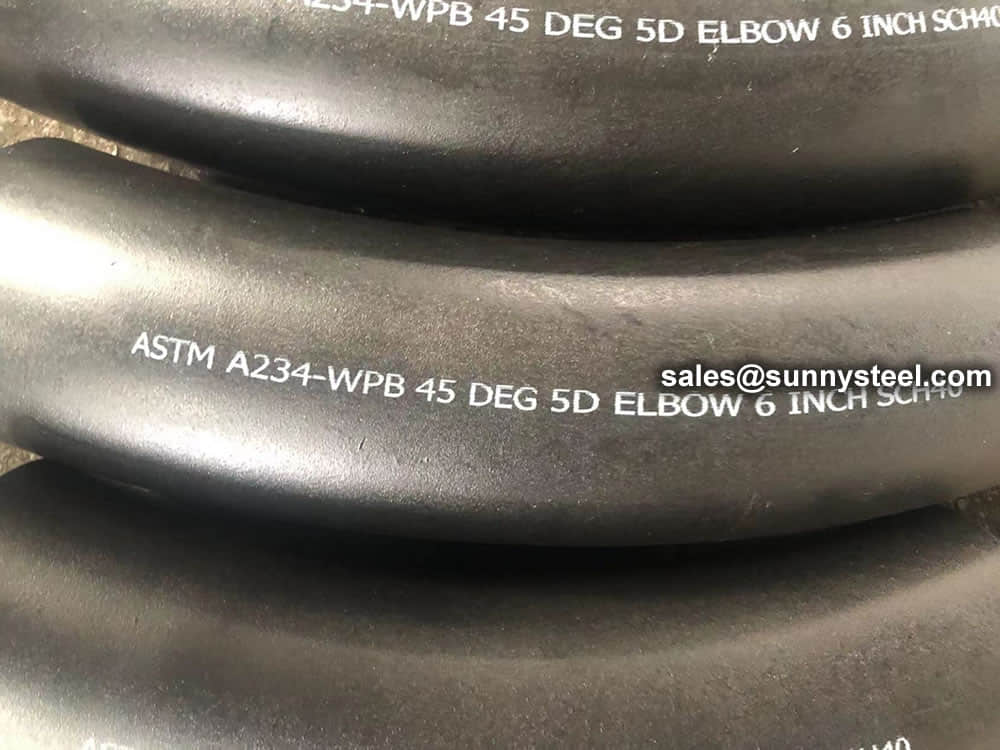
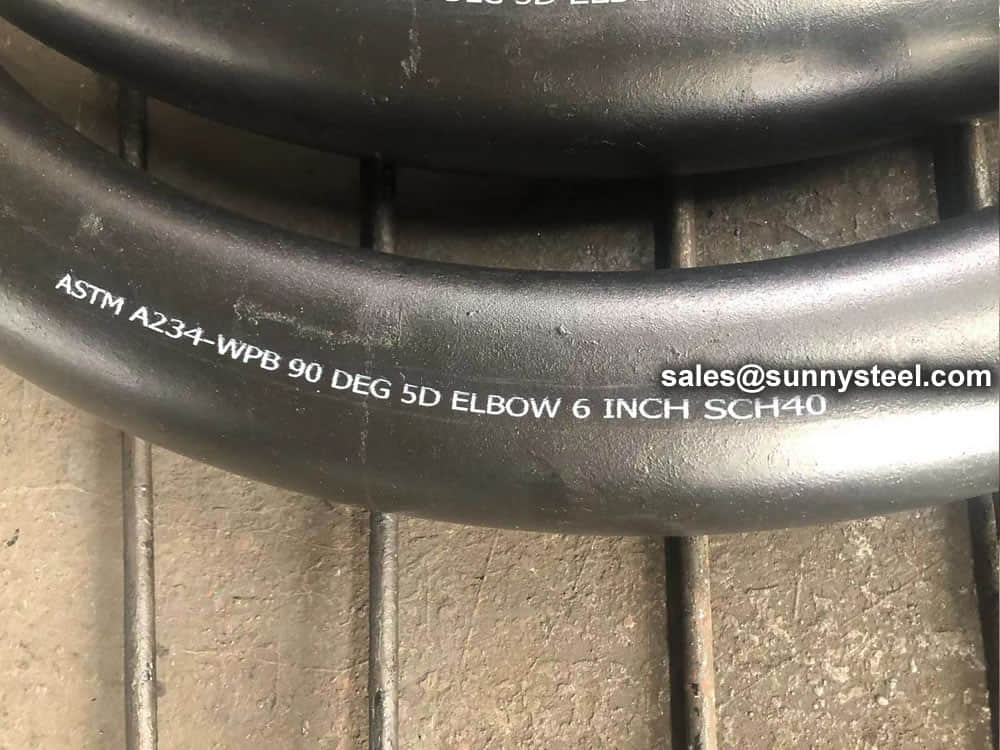

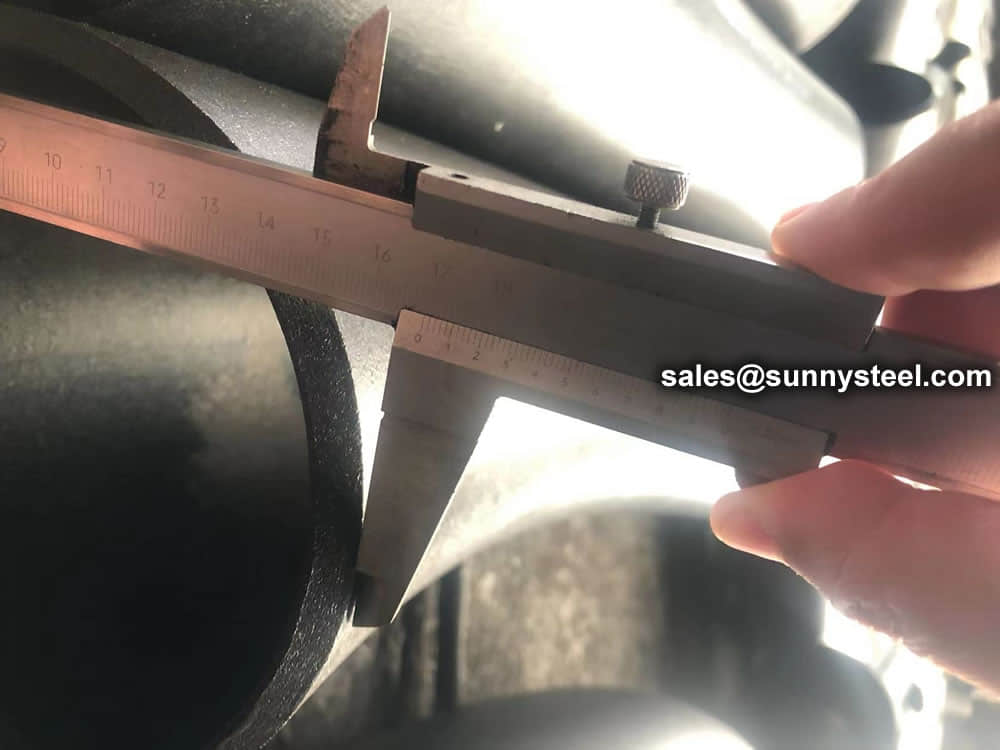
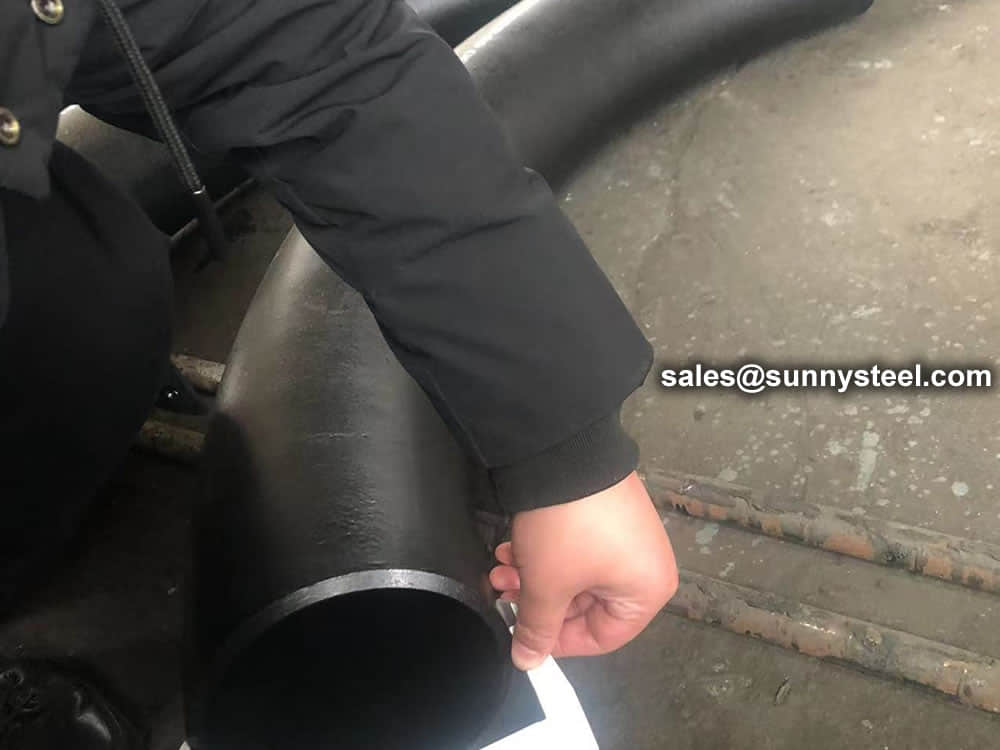
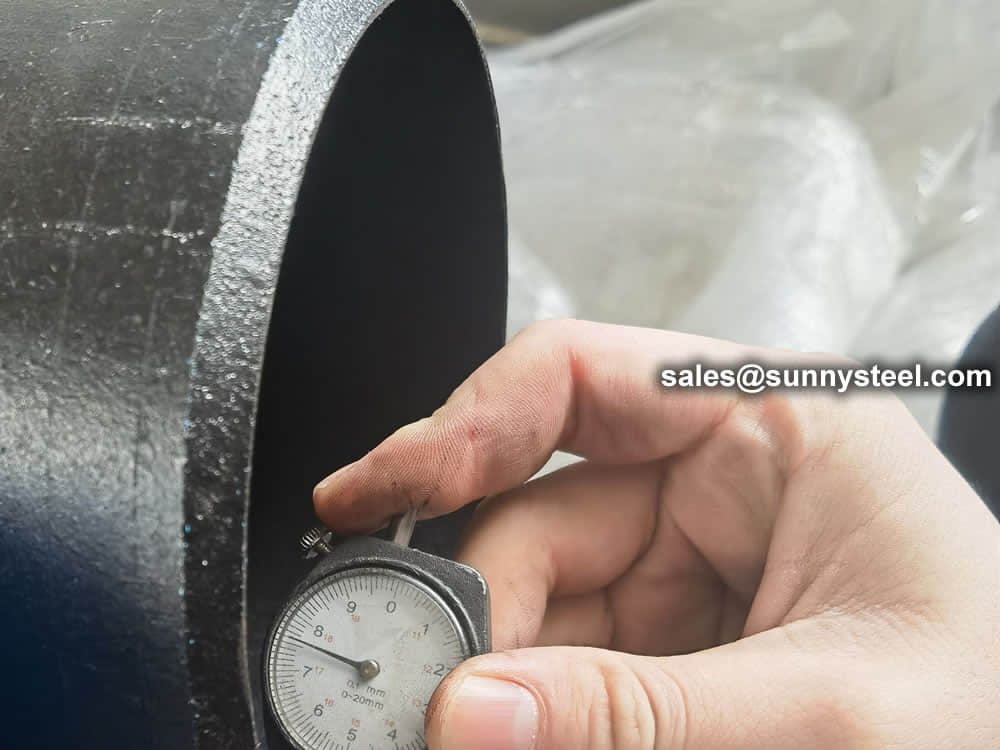
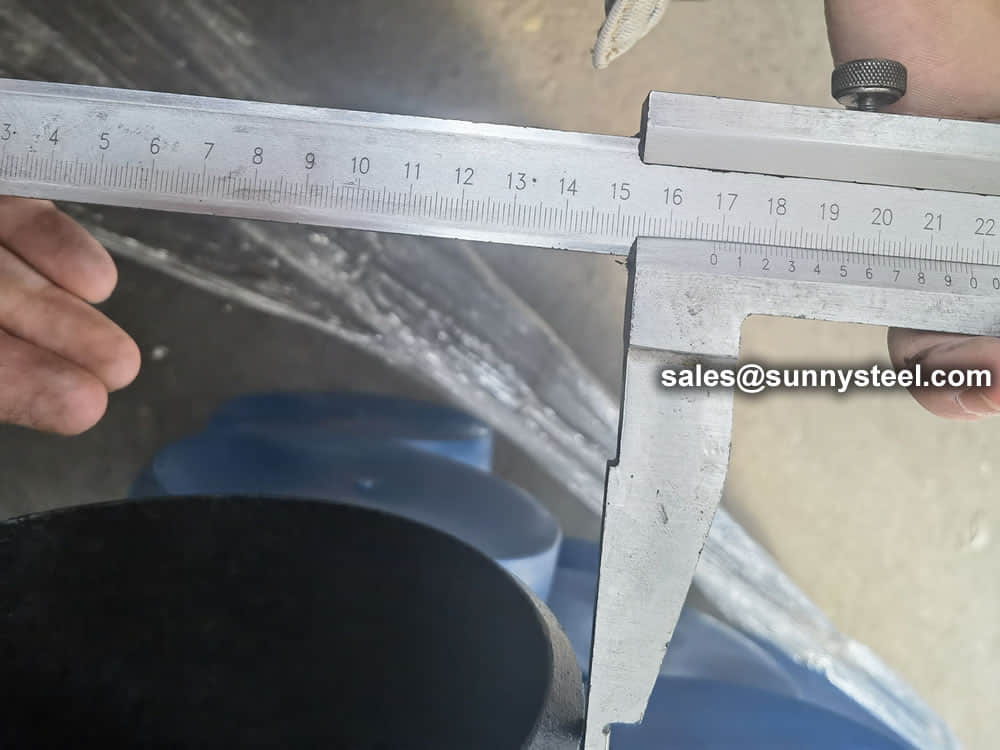
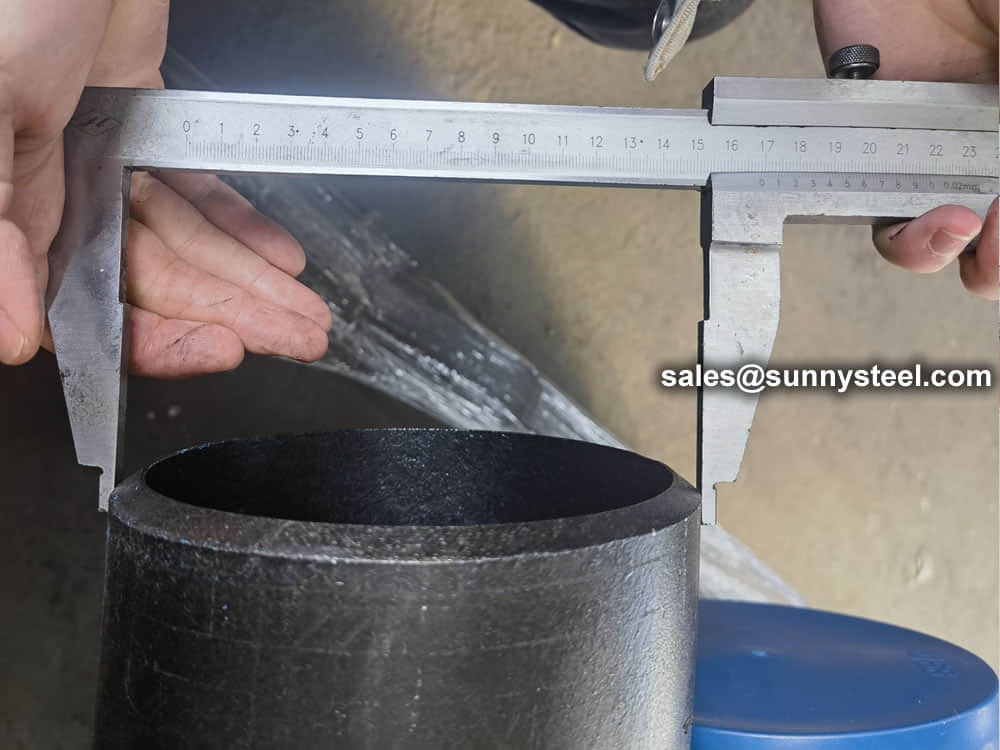
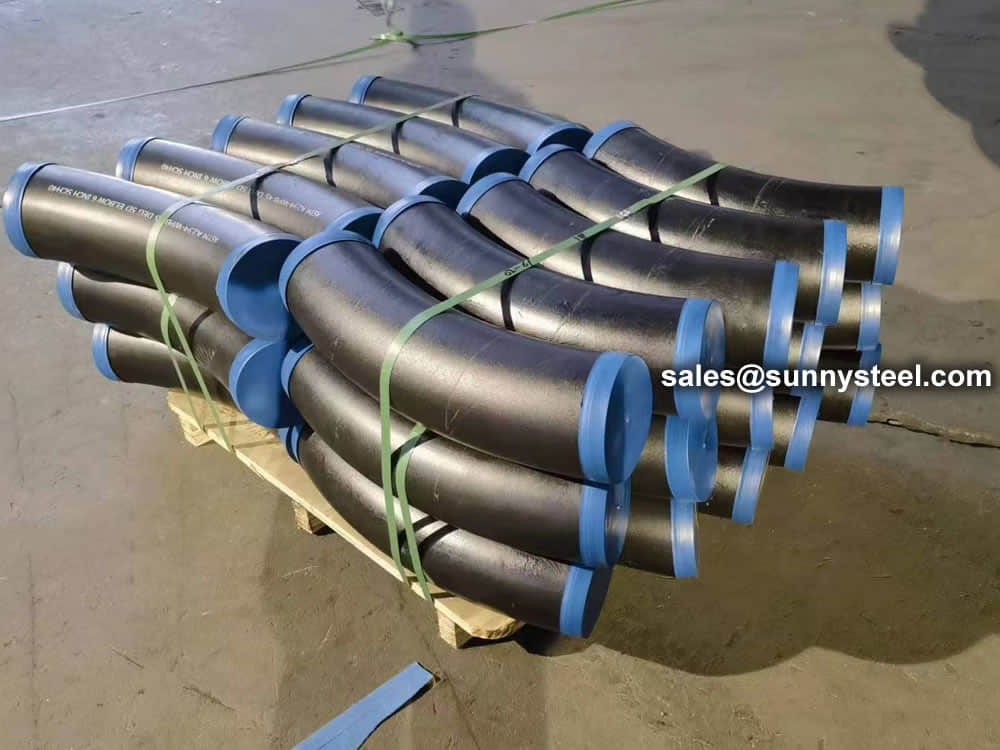
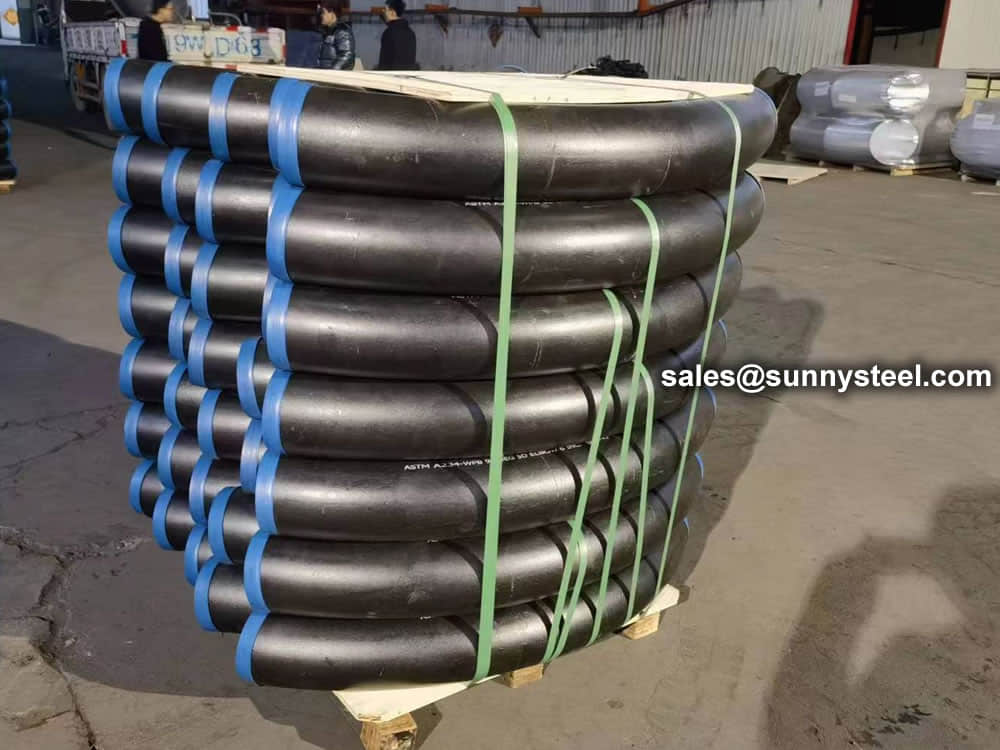
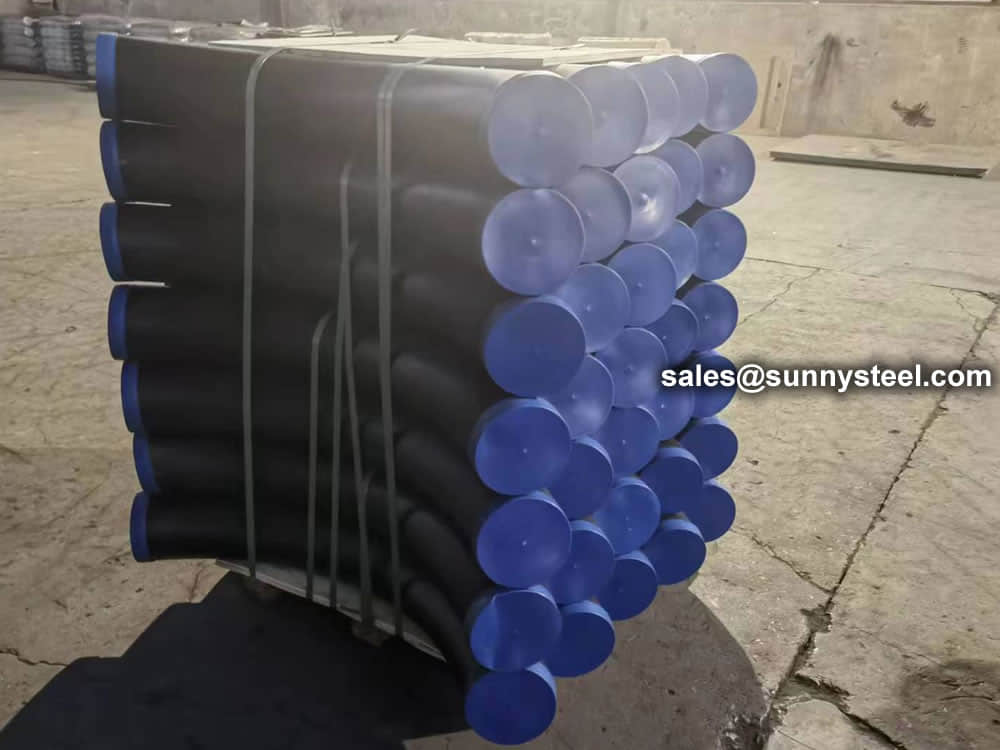
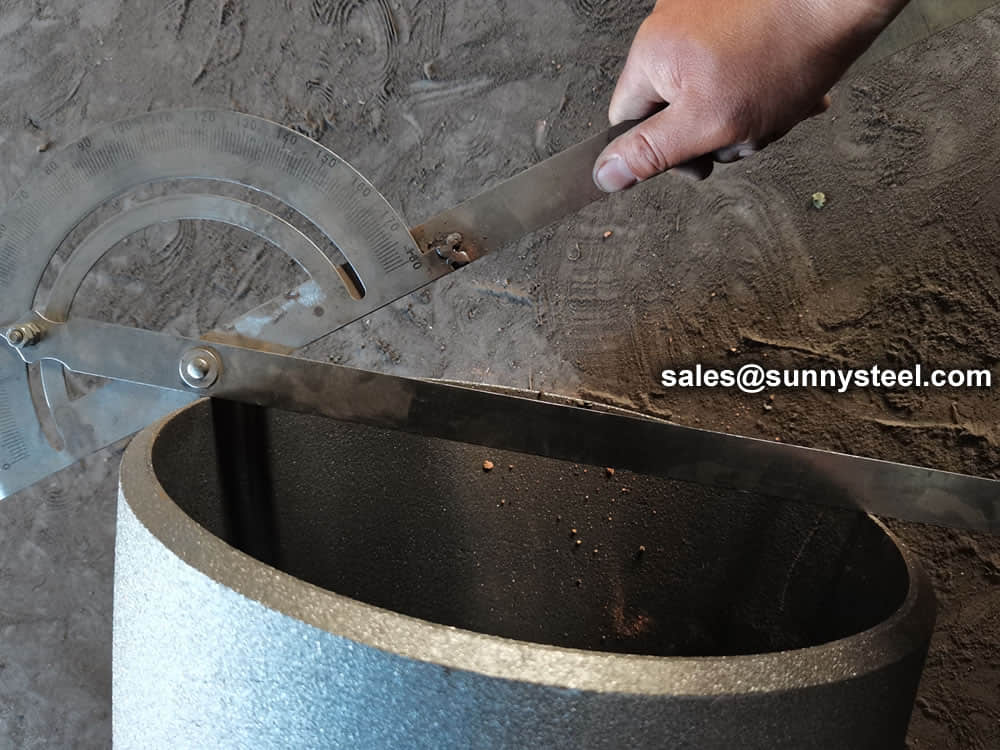
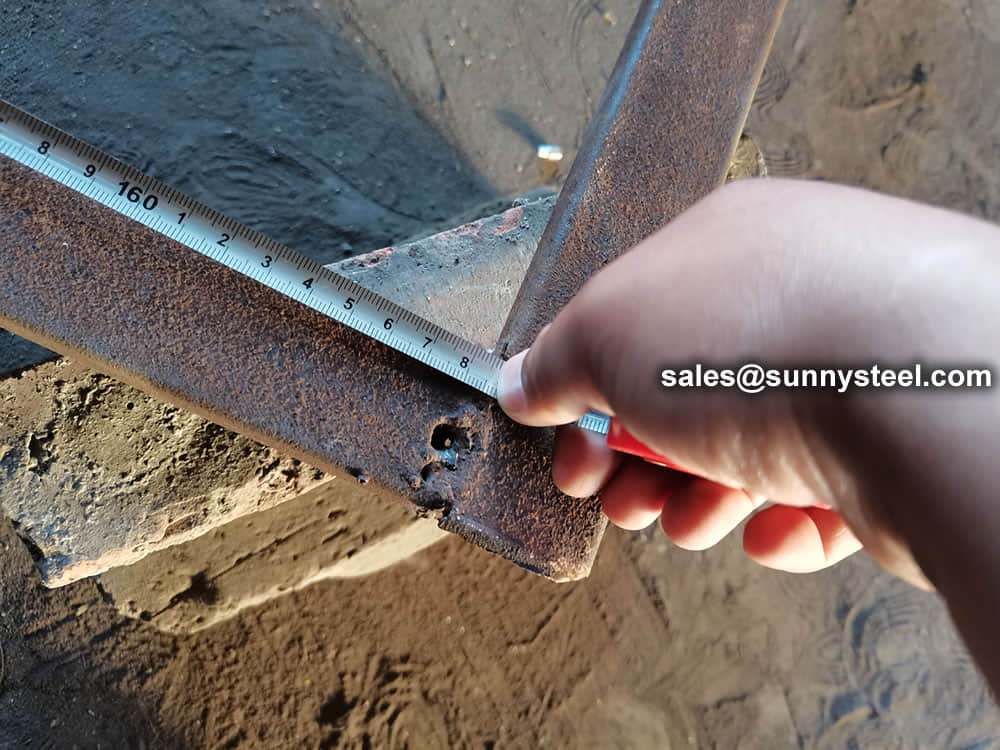
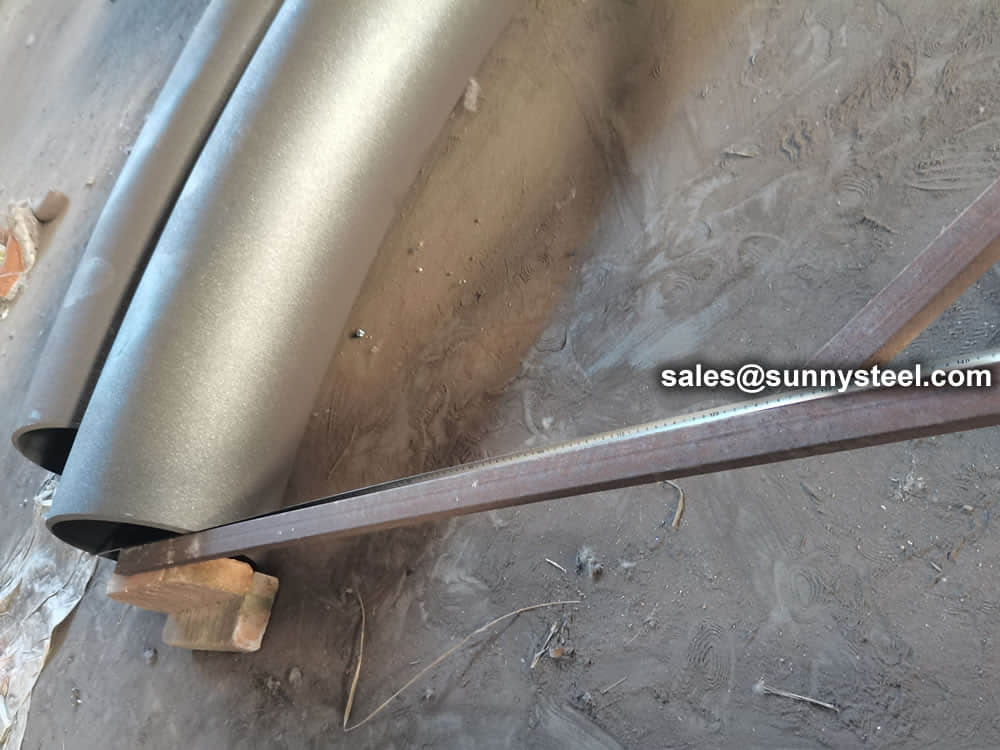
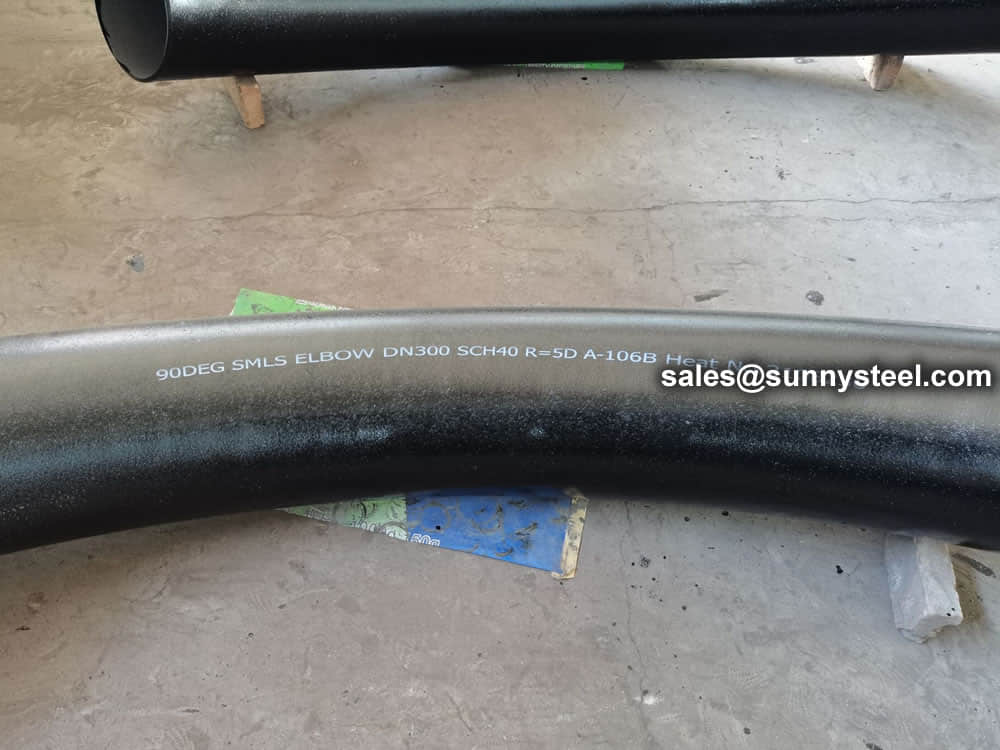
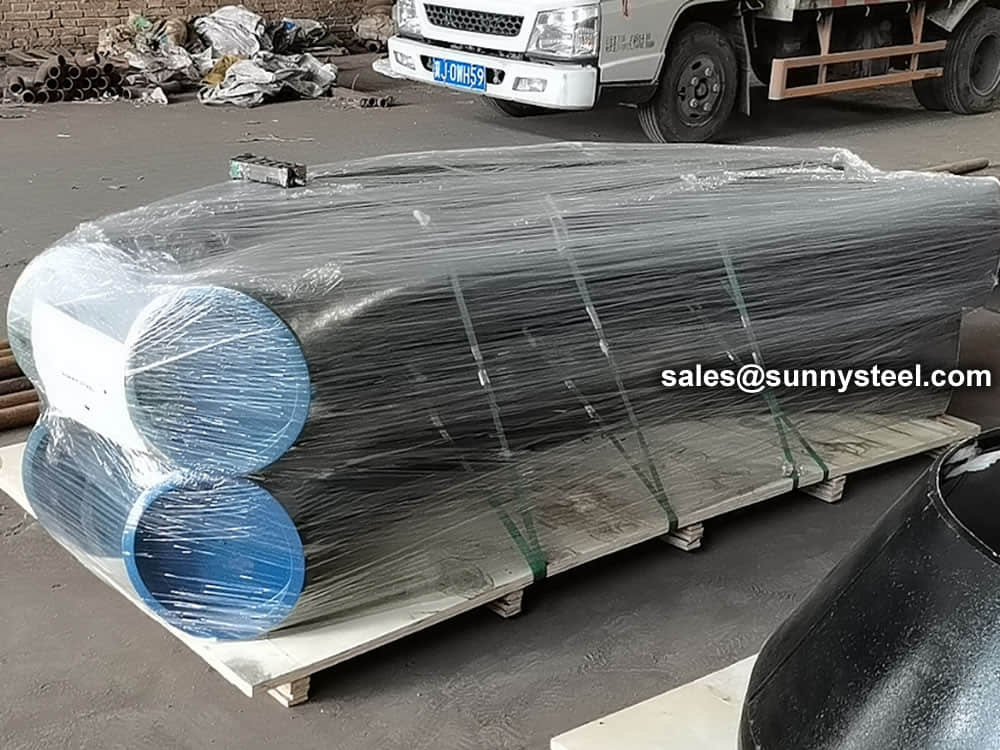
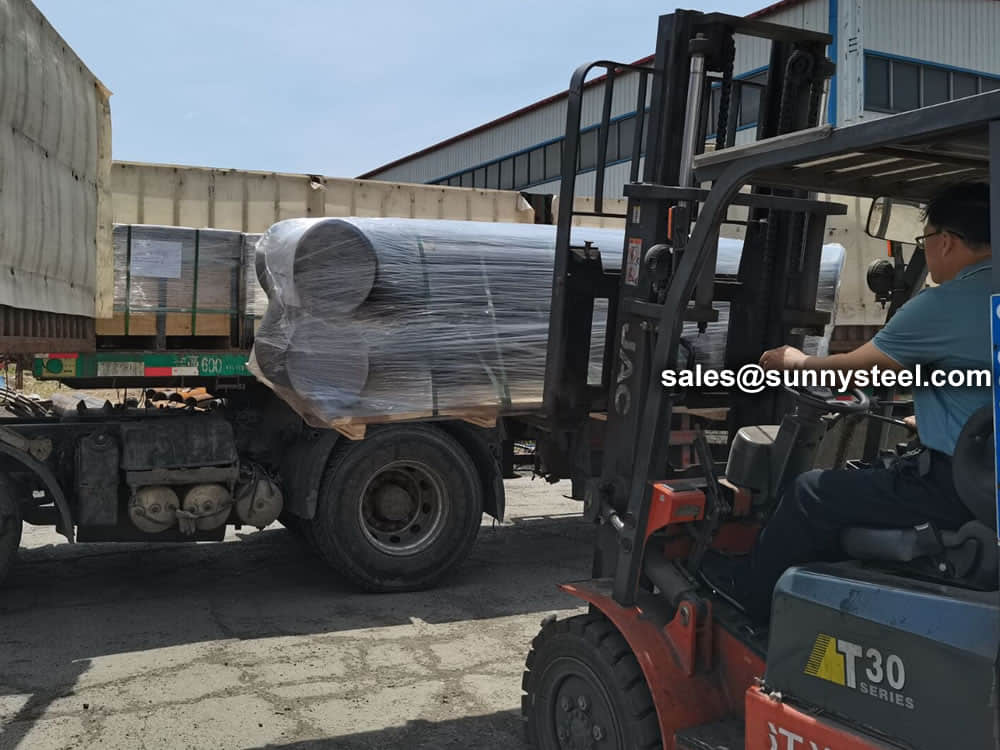
The RADIUS of a 5D pipe bend is actually what is 5 times the nominal diameter. So if you had a 10″ diameter pipe, the radius of the centerline of the bend would be 50 inches. Larger numbers have smoother curves. Smoother curves are often used for applications with higher pressure, abrasion or corrosion.
The 5D bend dimensions chart provides a visual representation of the bend's key measurements, ensuring precision during fabrication and installation. Here are the critical dimensions typically included in the chart:
Nominal Diameter (D): The nominal diameter of the pipe serves as the foundation for calculating the dimensions of the 5D bend. It is a key reference point for all other measurements.
Centerline Radius (R): The centerline radius denotes the radius of the curvature of the bend's centerline. This measurement ensures that the bend aligns with the overall pipe or tubing system.
Tangent Length (L): The tangent length refers to the straight portion of the pipe or tubing that exists on both sides of the bend. This measurement is crucial for proper installation and alignment.
Arc Length (A): The arc length represents the length of the curved portion of the bend. It plays a pivotal role in calculating the overall dimensions and ensuring a seamless fit within the system.
To calculate the length of a 5D bend, you can use the formula L = 5 x D x θ, where L is the length of the bend, D is the diameter of the pipe, and θ is the angle of the bend in radians. For example, if you have a 6-inch pipe and you want to bend it at a 90-degree angle, the length of the 5D bend would be: L = 5 x 6 x (90/180) = 15 inches. However, it's important to note that the dimensions and types of 5D bends can vary depending on the manufacturer and the specific requirements of the project, so it's always best to consult with the manufacturer or a professional engineer to ensure that you have the correct dimensions for your specific application.
3D or 5D Pipe Fittings are always use for pipeline connection, the difference is the radius. it can be divide to 3D,5D,6D,7D,10D etc.
3D pipe bending is a pipe bend that the bend radius is 3 times the pipe outside diameter. The RADIUS of a 5D pipe bend is actually what is 5 times the nominal diameter. So if you had a 10″ diameter pipe, the radius of the centerline of the bend would be 50 inches.
Larger numbers have smoother curves. Smoother curves are often used for applications with higher pressure, abrasion or corrosion.
Bends are always part of piping systems. Where standard fittings do not work, induction bends are the next best option. Induction bends in particular meet the demands of stringent technical requirements: Heavy wall, post-bend heat treatment, quenching & tempering, tangents with beveled ends etc.
Bends are made from straight pipe. Common bending radii are 3 and 5 times the pipe size (3R and 5R bends, where R=Nominal Pipe Size – nominal diameter – not radius). 3R bends are available from stock. Larger bends can be custom made, preferably by hot bending. Only seamless or electric-resistance-welded pipe is suitable for bending.
Although 1D and 1.5D bends are readily standard and available within the industry, these particular bends radii will not suit every need, thus 3D and 5D bends differ from the 1D or 1.5D industry standard.
The “D” represents the outside diameter of the pipe, measured in inches, The bends radius is then multiplied by the outside diameter to indicate the type of bend to be made. 3D and 5D Bends are significantly larger than the standard. resulting in larger radius to serve a variety of purposes.
5D bends offer several advantages, including their smooth flow characteristics, adaptability to different materials, and space-saving benefits. Understanding these key aspects can help engineers and professionals make informed decisions when selecting and using 5D bends in their piping systems.
The "5D" in 5D bends stands for "five times the diameter." This means that the bend radius is five times the outside diameter of the pipe. The larger bend radius in 5D bends allows for a more gradual curve, reducing the risk of pipe wall thinning and maintaining structural integrity.
5D bends are highly versatile and can be made from various materials, such as carbon steel, stainless steel, alloy steel, and other metals. This makes them suitable for a wide range of applications in different industries, including oil and gas, petrochemical, power generation, and construction.
The gradual curvature of 5D bends ensures a smooth flow of fluids or gases through the pipeline. The gentle transition minimizes pressure drop and flow resistance, optimizing the efficiency of the system.
5D bends are often used in tight spaces or areas with limited clearance. The larger bend radius allows for efficient redirection of flow without the need for additional fittings or complex configurations.
Maintaining the structural integrity of the pipe is crucial in critical applications. 5D bends help evenly distribute stress along the bend, reducing the risk of pipe failure or deformation. This is particularly important in high-pressure or high-temperature environments.
Pipe bends are used in many industries, including chemical, oil and gas, electric, metallurgy and shipbuilding. Pipe bends function as structural passageways to facilitate the transfer of substances, such as water and fuel. Some have a short radius while others have a long radius. Long radius bends give less frictional resistance and allow for less pressure drop when compared to short radius bends. When selecting the type of pipe bend, it’s important to choose one that is compatible to the application.
Bend pipes come in all types of radii, including 3D bends, 4D bends, 5D bends, 8D bends and 10D bends. The radius in 5D bends is five times the nominal diameter. With a 10-inch diameter pipe, the radius of the centerline of the bend would be 50 inches. Pipe bending for the specified radii is both art and science. And with today’s modern machines and advanced software, pipe bending is highly precise. With the right machine, lubrication, tooling and material, achieving the perfect bend is a sure thing.
Although the words bends and elbows are often used as synonyms, there are some differences. Bend is a term for any offset of direction in the piping while elbow is an engineering term. Elbows have limitations to angle, bend radius and size. Most angles are either 45 degrees or 90 degrees. All other offsets are specifically pipe bends. And while elbows have sharp corners, bends never do. The most basic different between a bend and an elbow is the radius of curvature. Bends have a radius more than twice the diameter, and elbows have a radius of curvature between one and two times the size of the pipe’s diameter. All elbows are bends, but not all bends are elbows.
Induction bending is one of the means of bending pipes for 5D and other bends. Local heating, using high-frequency induced electrical power, is applied. An induction coil is placed around the pipe and heats a circumferential area of the pipe at a temperature between 850 to 1100 degrees Celsius. When the right temperature is reached, the pipe moves through an induction coil while an arm applies the bending force. There are many benefits to induction bending. It allows for large radii for smooth flow of fluid, reduces the number of welds in a system and fabricates bends quickly. With faster production, efficiency is ramped up. It’s also a clean process, as no lubrication is needed, and water is recycled.
Ram-type bending is an old and effective bending method for bending pipes, including 4D bends and 5D bends. This method is often used in muffler shops. It’s also one of the least expensive ways to bend pipe. A hydraulically driven ram forces the pipe against pivot blocks or rollers. Often, a ram tool is used to produce a concave surface and to prevent stretching on the exterior of the bend. The only downside is that ram-type bending is not as controllable as other methods.
Roll bending is commonly used for pipes in the construction industry. Rolls are positioned vertically or horizontally to produce very large radii. The pinch-style roll bender is one of the machine types used for roll bending. A tube feeds between the lower and upper roll to produce the wanted bend angle. Some applications may require an additional roll to guide the tube outward when the coil is being formed.
The mandrel bending pipe method is effective when the least amount of deformation is desired. The pipe is supported with a mandrel support to bend the pipe. The pipe is drawn through a counter bending die for further bending. This method of pipe bending is used in the manufacture of heat exchanger tubing, dairy tubing and exhausts like turbocharger and custom made ones. This method produces a non-deformed diameter every time.
Rotary draw bending is often used for bending pipe when a constant diameter and good finish are desired. The pipe is drawn through a stationary counter-bending die onto a fixed radius former die. It’s used for roll cages, stock car chassis and other types of pipes.
Centerline radius, outside diameter and wall thickness are important variables with bending pipe methods. Plus, every pipe schedule has a nominal wall thickness. And since wall thickness can vary, any variations need to be accounted for. Other bending variables include the neutral line, outside bend radius and inside bend radius. Pipes experience spring back after bending. The harder the pipe and small the bend’s centerline radius, the more spring back, which results in radial growth. Copper pipes have less radial growth than steel pipe due to its less spring back. In pipe bending, consistency, size and quality of the weld seam matter for centerline radius, outside diameter and wall thickness. When these are right, the perfect bend can be created.
Common materials used for pipes and pipe bends include carbon, stainless steel, titanium, aluminum and cast iron. There are also plastic pipes of various grades. It’s important to select the right material for the right application, including the pipe fittings. Pipe fitting materials include aluminum, brass, bronze, cast iron, vitrified clay and many others. Pipe fittings must satisfy many criteria. The materials must be compatible with the fluids being transported, different pressure levels and fluctuating temperatures. Materials should also conform to certain standards like DIN, ASME, NPT and BSP. Surface finish is also important, and pipe fittings should have a corrosion-resistant property.
In some fields, the schedule 40 and schedule 80 are used for pipes. However, there are many other schedules due to increased pressure demands. The schedule of a pipe refers to its pressure rating. The higher the schedule, the higher pressure it can have. As the schedule increases, the wall thickness increases. When choosing pipe bends, it is critical to consider the schedule of the pipe. Schedule 80 is often used for heavy-duty while schedule 40 is often used for light-duty. Be sure to choose the appropriate schedule for the pipe bend, and it will be a perfect match.
The 5D bend pipe finds extensive application in various industries, including oil and gas, petrochemicals, power generation, shipbuilding, and construction. It is used wherever precise bends are required for optimal system performance.
The 5D bend pipe finds extensive application in various industries, including oil and gas, petrochemicals, power generation, shipbuilding, and construction. It is used wherever precise bends are required for optimal system performance.
The advantages of a 5D bend pipe include optimal flow efficiency, enhanced structural integrity, space optimization, cost savings in fabrication, and its versatility in diverse applications.
The smooth curvature of the 5D bend pipe minimizes turbulence and pressure drop, ensuring efficient flow of liquids, gases, or other materials through the piping system.
Yes, the compact design of the 5D bend pipe allows for better space utilization within the piping layout, making it beneficial for projects with space constraints.
Yes, the precise bends achieved with the 5D bend pipe often result in reduced welding and fabrication costs, leading to overall cost savings during construction and maintenance.
Yes, the 5D bend pipe is designed to withstand high-pressure environments, ensuring its suitability for various demanding industrial applications.
Yes, manufacturers can customize the 5D bend pipe based on specific project requirements, including material selection, bending techniques, and quality assurance.
Industries such as oil and gas, petrochemicals, power generation, shipbuilding, construction, and others benefit significantly from the use of 5D bend pipes in their piping systems.
Yes, the 5D bend pipe is commonly employed in shipbuilding and marine applications, where precision bends are crucial for efficient onboard piping systems.
ASME B16.9 Standard covers overall dimensions, tolerances,ratings, testing, and markings for factory-made wrought buttwelding fittings in sizes NPS 1⁄2 through NPS 48 (DN 15 through DN 1200).
Download PDF| Nominal | Outside Diameter | 90° Elbows | 45° Elbows | 180° Returns | ||||
|---|---|---|---|---|---|---|---|---|
| Pipe Size |
Long Radius | Short Radius | Long Radius | Long Radius | ||||
| (inches) | (mm) | (inches) | Center to Face | Center to Face | Center to Face | Radius | Center to Center | Back to face |
| (inches) | (inches) | (inches) | (inches) | (inches) | (inches) | |||
| 1/2 | 21.3 | 0.84 | 1.5 | – | 5/8 | 2 | 1.875 | |
| 3/4 | 26.7 | 1.05 | 1.125 | – | 7/16 | 2.25 | 1.6875 | |
| 1 | 33.4 | 1.315 | 1.5 | 1 | 7/8 | 3 | 2.1875 | |
| 1.25 | 42.2 | 1.66 | 1.875 | 1.25 | 1 | 3.75 | 2.75 | |
| 1.5 | 48.3 | 1.9 | 2.25 | 1.5 | 1.125 | 3 | 4.5 | 3.25 |
| 2 | 60.3 | 2.375 | 3 | 2 | 1.375 | 4 | 6 | 4.1875 |
| 2.5 | 73 | 2.875 | 3.75 | 2.5 | 1.75 | 5 | 7.5 | 5.1875 |
| 3 | 88.9 | 3.5 | 4.5 | 3 | 2 | 6 | 9 | 6.25 |
| 3.5 | 101.6 | 4 | 5.25 | 3.5 | 2.25 | 7 | 10.5 | 7.25 |
| 4 | 114.3 | 4.5 | 6 | 4 | 2.5 | 8 | 12 | 8.25 |
| 5 | 141.3 | 5.563 | 7.5 | 5 | 3.125 | 10 | 15 | 10.3125 |
| 6 | 168.3 | 6.625 | 9 | 6 | 3.75 | 12 | 18 | 12.3125 |
| 8 | 219.1 | 8.625 | 12 | 8 | 5 | 12 | 24 | 16.3125 |
| 10 | 273.1 | 10.75 | 15 | 10 | 6.25 | 15 | 30 | 20.375 |
| 12 | 323.9 | 12.75 | 18 | 12 | 7.5 | 18 | 36 | 24.375 |
| NOMINAL PIPE SIZE NPS | ANGULARITY TOLERANCES | ANGULARITY TOLERANCES |
|---|---|---|
| Size | Off Angle Q | Off Plane P |
| ½ to 4 | 0.03 | 0.06 |
| 5 to 8 | 0.06 | 0.12 |
| 10 to 12 | 0.09 | 0.19 |
| 14 to 16 | 0.09 | 0.25 |
| 18 to 24 | 0.12 | 0.38 |
| 26 to 30 | 0.19 | 0.38 |
| 32 to 42 | 0.19 | 0.5 |
| 44 to 48 | 0.18 | 0.75 |
All dimensions are given in inches. Tolerances are equal plus and minus except as noted.
The ASME B16.9 pipe fittings can be used under the jurisdiction of the ASME Boiler & Pressure Vessel Code (BPVC) as well as the ASME Code for pressure piping. Referencing pressure ratings of flanges per ASME B16.5, they can be designated as Classes 150, 300, 600, 900, 1500 and 2500. The allowable pressure ratings for ASME B16.9 pipe fittings may be calculated as for straight seamless pipe of equivalent material in accordance with the rules established in the applicable sections of ASME B31 Code for pressure piping.
The design of butt welding pipe fittings made to ASME B16.9 shall be established by one of the following methods: (a) mathematical analyses contained in pressure vessel or piping codes; (b) proof testing; (c) experimental stress analysis with hydrostatic testing to validate experimental results; (d) detailed stress analysis with results evaluation.
Generally, ASME B16.9 pipe fittings shall be marked to show the following details: “trademark + material grade + wall thickness + size + heat number”. For example, “M ASTM A234 WP5 SCH80 6″ 385“. When steel stamps are used, care shall be taken so that
the marking is not deep enough or sharp enough to cause cracks or to reduce the wall thickness of the fitting below the minimum allowed.
The ASME B16.9 fittings may be made from an extensive range of mateirals covering (1) carbon and low-alloy steels in accordance with ASTM A234 and ASTM A420; (2) austenitic and duplex stainless steels in accordance with ASTM A403 and ASTM A815; (3) nickel alloys in accordance with ASTM B366; (4) aluminum alloys in accordance with ASTM B361; and (5) titanium alloys in accordance with ASTM B363.

Sizes 1/2″ – 48″
Pipe fitting dimensions are in either metric or Standard English.
Because pipe fitting covers Pipe Fitting Dimensions several aspects, only the most common pipe fitting sizes can be given here. The most applied version is the 90° long radius and the 45° elbow, while the 90° short radius elbow is applied if there is too little space. The function of a 180° elbow is to change direction of flow through 180°. Both, the LR and the SR types have a center to center dimension double the matching 90° elbows. These fittings will generally be used in furnesses or other heating or cooling units.
Some of the standards that apply to buttwelded fittings are listed below. Many organizations such as ASME, ASTM, ISO, MSS, etc. have very well developed standards and specifications for buttwelded fittings. It is always up to the designer to ensure that they are following the applicable standard and company specification, if available, during the design process.
Some widely used pipe fitting standards are as follows:
This is one of the reputed organizations in the world developing codes and standards.
The schedule number for pipe fitting starts from ASME/ANSI B16. The various classifications of ASME/ANSI B16 standards for different pipe fittings are as follows:
This is one of the largest voluntary standards development organizations in the world. It was originally known as the American Society for Testing and Materials (ASTM).
AWWA About – Established in 1881, the American Water Works Association is the largest nonprofit, scientific and educational association dedicated to managing and treating water, the world’s most important resource.
ANSI is a private, non-profit organization. Its main function is to administer and coordinate the U.S. voluntary standardization and conformity assessment system. It provides a forum for development of American national standards. ANSI assigns “schedule numbers”. These numbers classify wall thicknesses for different pressure uses.
The Manufacturers Standardization Society (MSS) of the Valve and Fittings Industry is a non-profit technical association organized for development and improvement of industry, national and international codes and standards for: Valves, Valve Actuators, Valve Modification, Pipe Fittings, Pipe Hangers, Pipe Supports, Flanges and Associated Seals
Piping codes imply the requirements of design, fabrication, use of materials, tests and inspection of various pipe and piping system. It has a limited jurisdiction defined by the code. On the other hand, piping standards imply application design and construction rules and requirements for pipe fittings like adapters, flanges, sleeves, elbows, union, tees, valves etc. Like a code, it also has a limited scope defined by the standard.
“Standards” on pipe fittings are based on certain factors like as follows:
BSP is the U.K. standard for pipe fittings. This refers to a family of standard screw thread types for interconnecting and sealing pipe ends by mating an external (male) with an internal (female) thread. This has been adopted internationally. It is also known as British Standard Pipe Taper threads (BSPT )or British Standard Pipe Parallel (Straight) threads (BSPP ). While the BSPT achieves pressure tight joints by the threads alone, the BSPP requires a sealing ring.
This is the Japanese industrial standards or the standards used for industrial activities in Japan for pipe, tube and fittings and published through Japanese Standards Associations.
National Pipe Thread is a U.S. standard straight (NPS) threads or for tapered (NPT) threads. This is the most popular US standard for pipe fittings. NPT fittings are based on the internal diameter (ID) of the pipe fitting.
We are manufacturer of Flange bolts & Nuts and supply high quality
The AN standard was originally designed for the U.S. Military. Whenever, a pipe fitting is AN fittings, it means that the fittings are measured on the outside diameter of the fittings, that is, in 1/16 inch increments.
For example, an AN 4 fitting means a fitting with an external diameter of approximately 4/16″ or ¼”. It is to be noted that approximation is important because AN external diameter is not a direct fit with an equivalent NPT thread.
Dash size is the standard used to refer to the inside diameter of a hose. This indicates the size by a two digit number which represents the relative ID in sixteenths of an inch. This is also used interchangeably with AN fittings. For example, a Dash “8” fitting means an AN 8 fitting.
ISO is the industrial pipe, tube and fittings standards and specifications from the International Organization for Standardization. ISO standards are numbered. They have format as follows:
“ISO[/IEC] [IS] nnnnn[:yyyy] Title” where
| Standard | Specification |
|---|---|
| ASTM A234 | Standard Specification for Piping Fittings of Wrought Carbon Steel and Alloy Steel for Moderate and High Temperature Service |
| ASTM A420 | Standard Specification for Piping Fittings of Wrought Carbon Steel and Alloy Steel for Low-Temperature Service |
| ASTM A234 WPB | ASTM A234 WPB refers to a specific grade of carbon steel pipe fittings, which are widely used in pressure piping and pressure vessel fabrication for service at moderate and elevated temperatures. |
| ASME B16.9 | ASME B16.9 Standard covers overall dimensions, tolerances,ratings, testing, and markings for factory-made wrought buttwelding fittings in sizes NPS 1⁄2 through NPS 48 (DN 15 through DN 1200). |
| ASME B16.28 | ASME B16.28 Standard covers ratings, overall dimensions, testing, tolerances, and markings for wrought carbon and alloy steel buttwelding short radius elbows and returns. |
| MSS SP-97 | MSS SP-97 Standard Practice covers essential dimensions, finish, tolerances, testing, marking, material, and minimum strength requirements for 90 degree integrally reinforced forged branch outlet fittings of buttwelding, socket welding, and threaded types. |
| ASTM A403 | Standard Specification for Wrought Austenitic Stainless Steel Piping Fittings. |
| DIN | EN | ASME |
|---|---|---|
| St 35.8 I St 35.8 III 15 Mo 3 13 CrMo 4 4 10 CrMo 9 10 St 35 N St 52.0 St 52.4 |
P235GH-TC1 P235GH-TC2 16Mo3 13CrMo4-5 10CrMo9-10 X10CrMoVNb9-1 P215NL P265NL L360NB L360NE P355N P355NL1 P355NH |
WPB WPL6 WPL3 WPHY 52 WP11 WP22 WP5 WP9 WP91 WP92 |
Visual Inspection is conducted on fittings to check any surface imperfections. Both fittings body and weld are checked for any visible surface imperfections such as dents, die marks, porosity, undercuts, etc. Acceptance as per applicable standard.
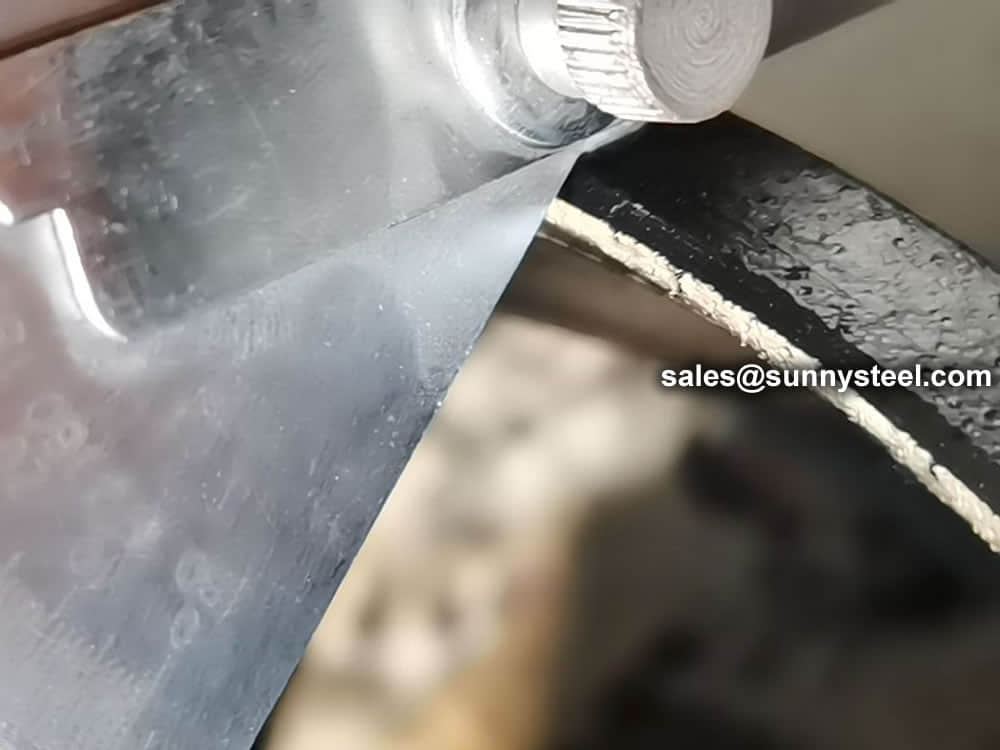
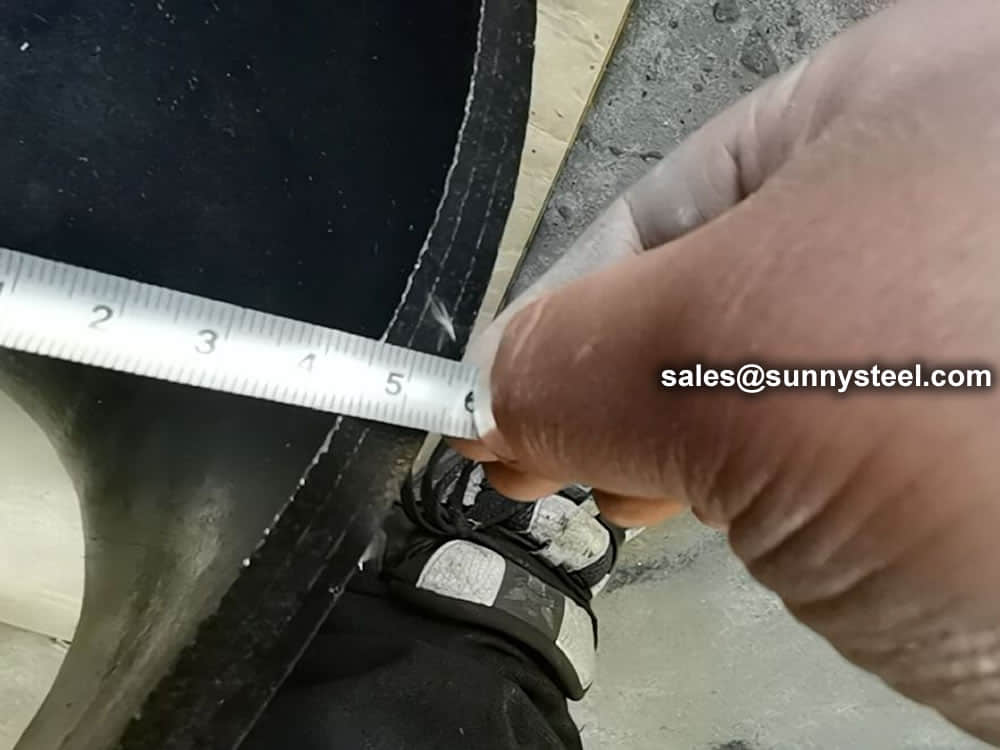
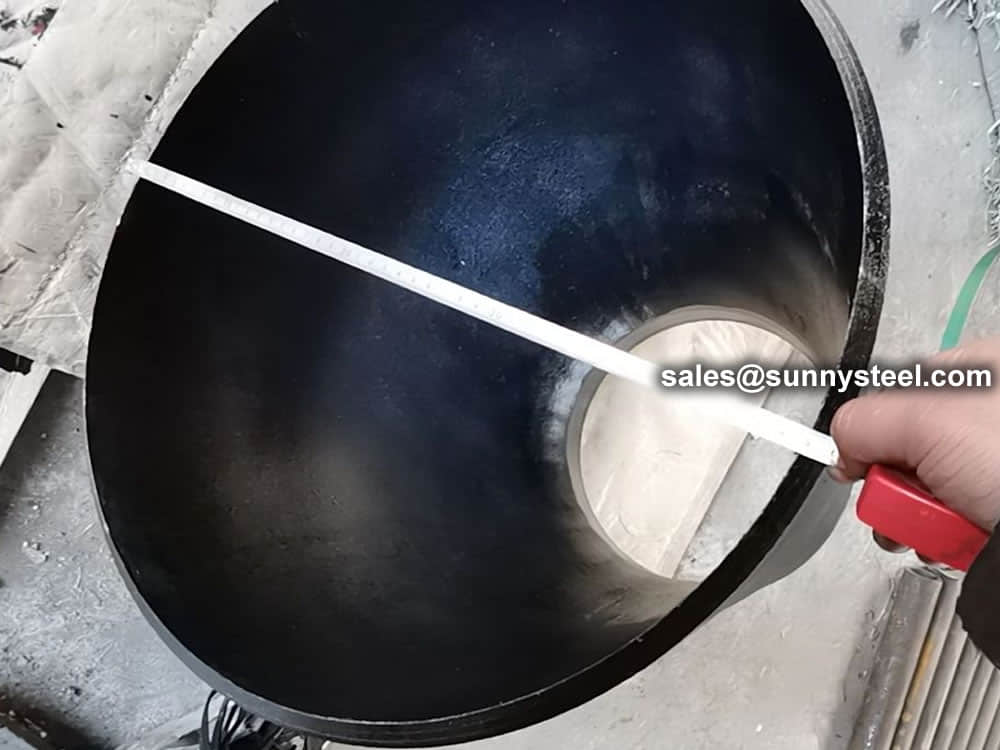
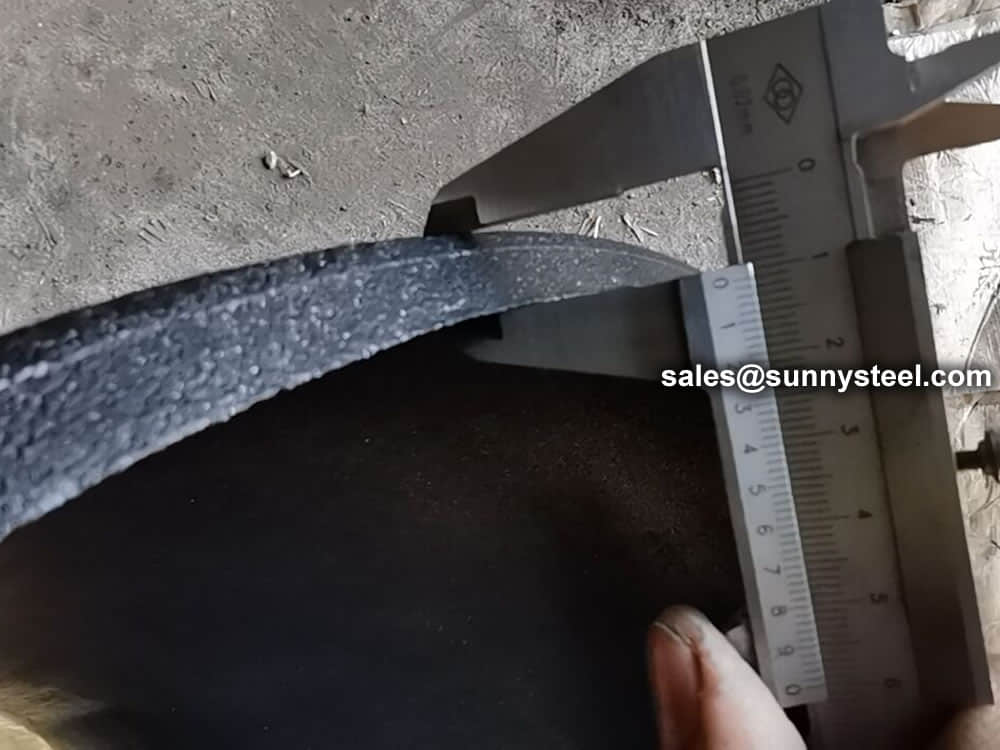
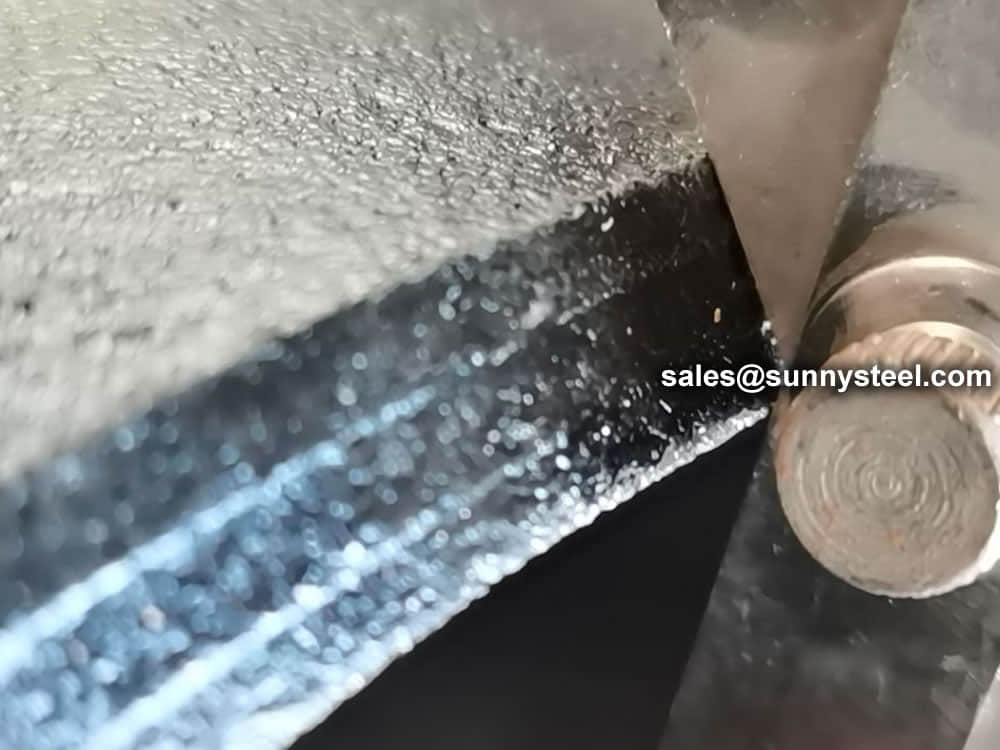
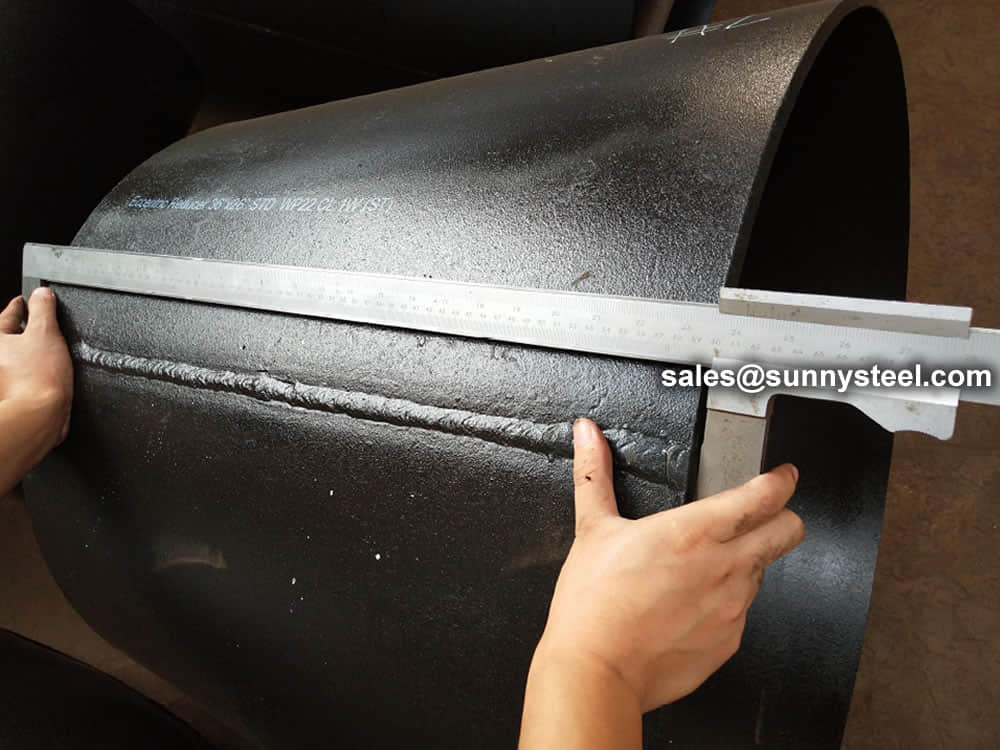
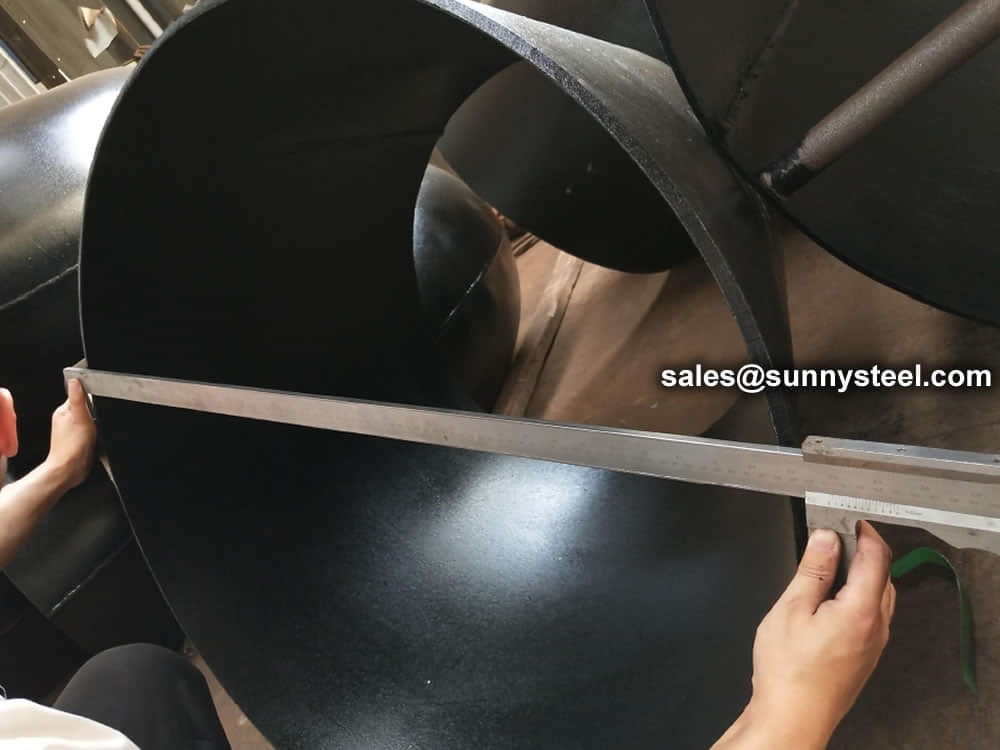
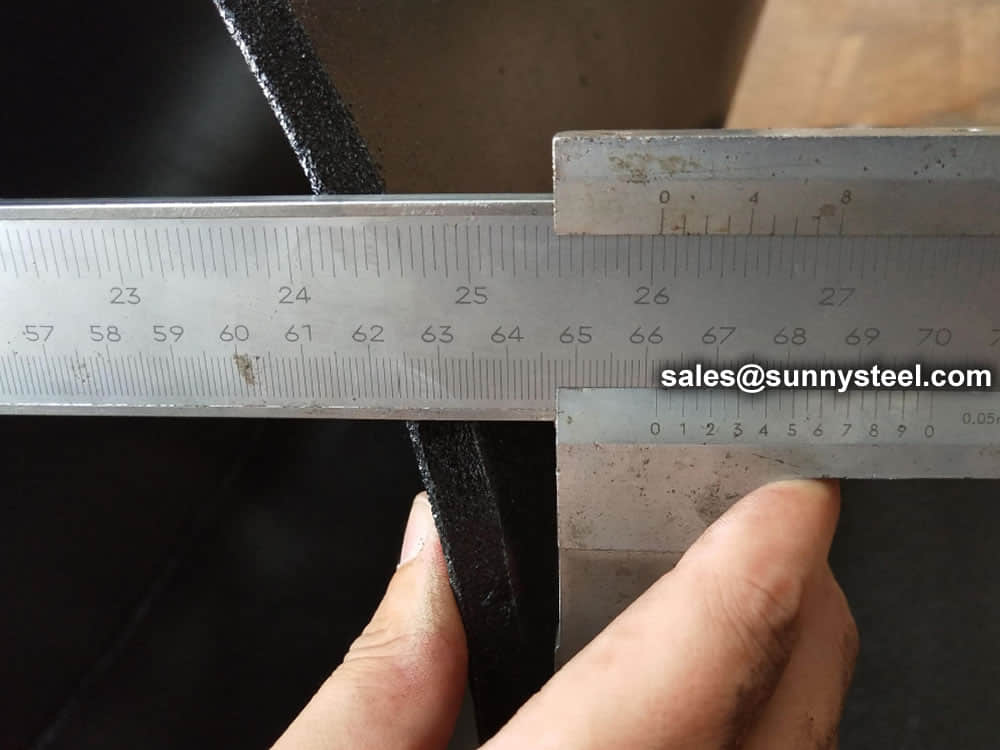
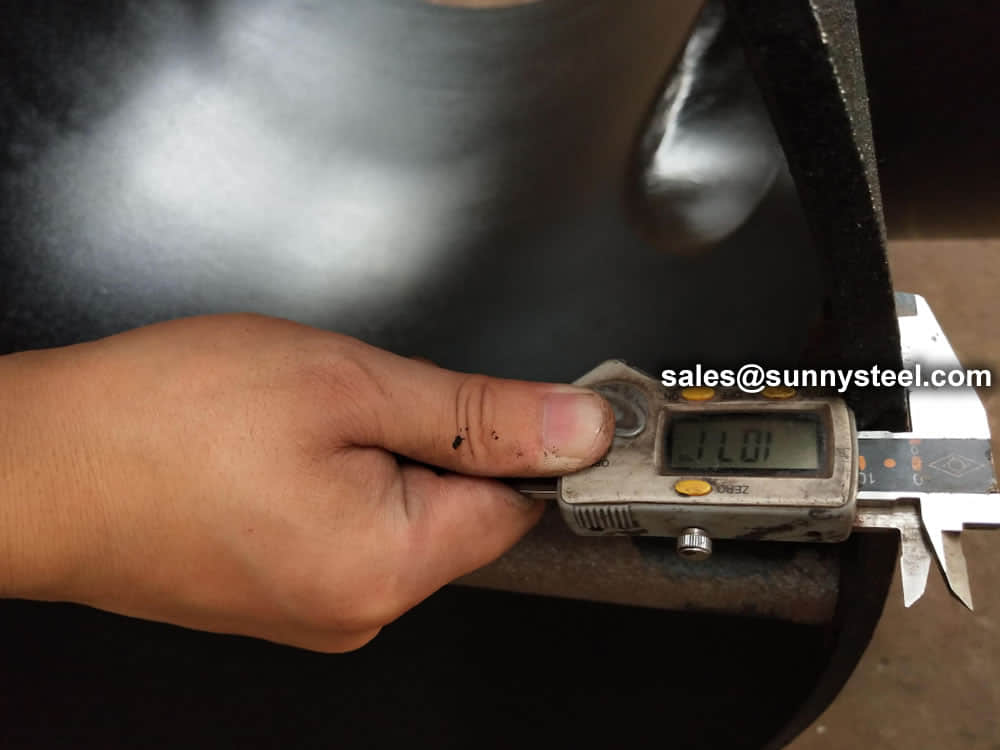
For packing of carbon steel flanges with painting,we would use the bubble wrap to protect the painting.For flanges without painting or oiled with long-term shipment,we would suggest client to use the anti-tarnish paper and plastic bag to prevent the rust.

When you partner with Sunny Steel, you can stop worrying about meeting deadlines thanks to our responsive and timely service. You'll also say goodbye to unnecessary shopping around. Instead, you'll get white glove service from an expert who understands your needs and can get you the materials you need quickly.
